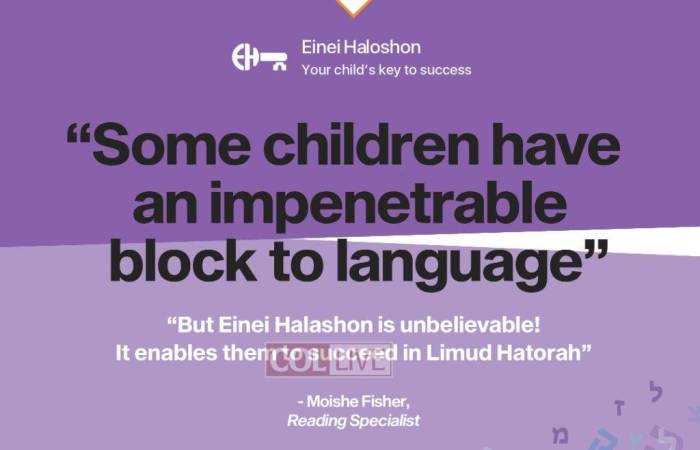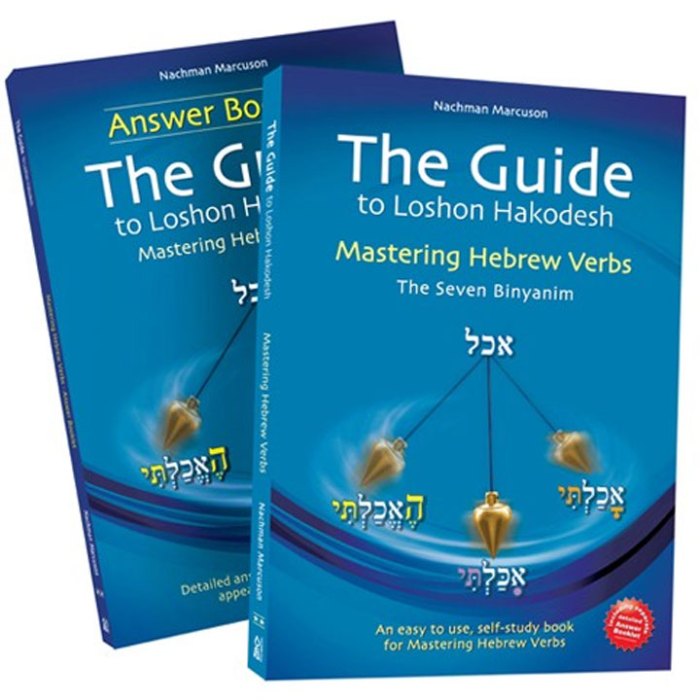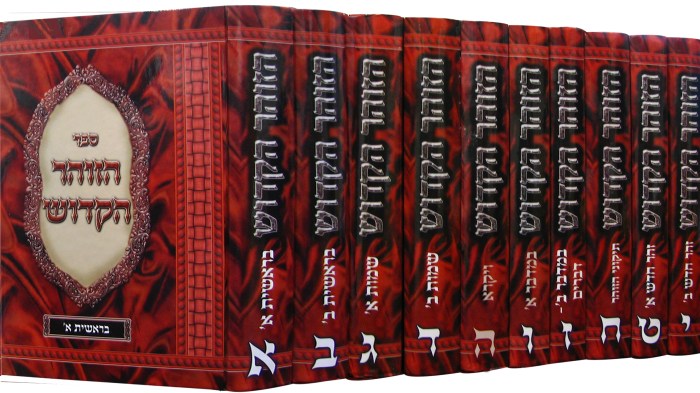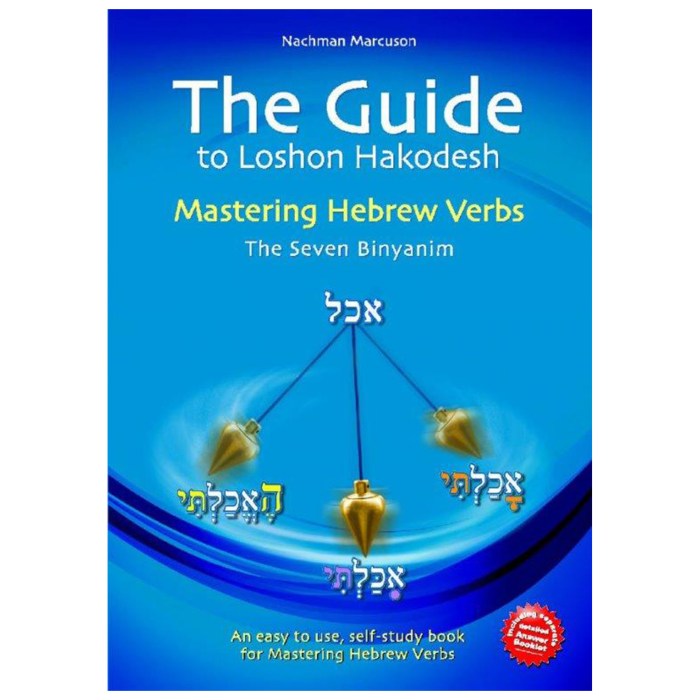Welcome to the guide to lashon hakodesh, an ancient and sacred language that has shaped Jewish identity for centuries. Join us as we delve into the rich history, intricate structure, and profound meanings of this enigmatic tongue.
From its origins in the Hebrew Bible to its use in liturgy, prayer, and mysticism, lashon hakodesh has played a pivotal role in Jewish culture and religious practices. Discover the unique grammatical features, symbolic vocabulary, and profound significance of this language that has connected generations of Jewish people.
The Origins and History of Lashon Hakodesh

Lashon Hakodesh, the sacred language of Judaism, has a rich and complex history. Its origins can be traced back to the ancient Israelites, who spoke a dialect of Canaanite known as Hebrew. Over time, Hebrew evolved into Lashon Hakodesh, a language used primarily for religious purposes.
The Role of Lashon Hakodesh in Jewish Culture and Religious Practices, The guide to lashon hakodesh
Lashon Hakodesh plays a central role in Jewish culture and religious practices. It is the language of the Torah, the Talmud, and other sacred texts. It is also the language of prayer and liturgy, and is used in Jewish ceremonies and rituals.
The use of Lashon Hakodesh in these contexts helps to create a sense of holiness and reverence.
The Significance of Lashon Hakodesh as a Sacred Language
Lashon Hakodesh is considered a sacred language by Jews. It is believed to be the language in which God revealed the Torah to Moses. As such, it is treated with great respect and reverence. Jews believe that the use of Lashon Hakodesh in religious contexts helps to connect them to God and to the Jewish tradition.
The Structure and Grammar of Lashon Hakodesh

Lashon Hakodesh exhibits a unique grammatical structure distinct from other Semitic languages. This intricate grammar serves as a foundation for understanding and interpreting religious texts.
Unique Grammatical Features
Lashon Hakodesh employs a complex system of prefixes, suffixes, and infixes to convey meaning. Verbs, for example, are conjugated based on person, number, gender, and tense. This allows for precise expression and nuanced communication.
Example:
The verb “to write” (katav) can be conjugated as follows:
- I write: katavti
- You (singular) write: katavta
- He writes: katav
Grammatical Structures in Religious Texts
The grammatical structures of Lashon Hakodesh are essential for interpreting religious texts. The use of specific tenses, for instance, can convey historical events, prophecies, or divine commands.
The guide to lashon hakodesh provides a comprehensive understanding of the sacred language. It delves into its intricate grammar, vocabulary, and nuances, enabling you to navigate the complexities of Hebrew texts. Take a break from your studies with our turn to a puddle crossword puzzle.
Sharpen your mind and return to the guide to lashon hakodesh with renewed focus and appreciation for the beauty of the language.
Example:
In the Torah, the phrase “And God said” (vayomer Elohim) is often used to introduce divine commands or declarations. The use of the past tense in this context emphasizes the historical nature of God’s words.
Differences from Other Semitic Languages
Lashon Hakodesh differs from other Semitic languages in several grammatical aspects. For example, it lacks the definite article “the” and uses a system of construct chains to indicate possession.
Example:
Instead of saying “the house of the king,” Lashon Hakodesh would say “house king” (bet hamelekh).
The Vocabulary and Meaning of Lashon Hakodesh

The vocabulary of Lashon Hakodesh is rich and complex, with many words having multiple meanings. These meanings can be literal, symbolic, or metaphorical. In this section, we will explore some of the key vocabulary used in Lashon Hakodesh and explain the symbolic and metaphorical meanings associated with these words.
Divine Attributes
- El: This word means “God” and is often used to refer to the God of Israel. It is also used to refer to other gods, but in a less reverent way.
- Elohim: This word is the plural form of El and is often used to refer to the God of Israel as a powerful and majestic being.
- Yahweh: This is the personal name of the God of Israel and is considered to be the most sacred name of God.
- Adonai: This word means “Lord” and is often used as a substitute for the name Yahweh.
- Shekinah: This word means “dwelling” and is used to refer to the presence of God.
The Use of Lashon Hakodesh in Religious Texts

Lashon Hakodesh holds a central and profound role in Jewish religious texts, liturgy, and mystical traditions.
In the Hebrew Bible (Tanakh), Lashon Hakodesh serves as the primary language of divine revelation. The Torah, Prophets, and Writings are composed almost entirely in Lashon Hakodesh, with only a few passages appearing in Aramaic.
The Role of Lashon Hakodesh in Jewish Liturgy and Prayer
In Jewish liturgy and prayer, Lashon Hakodesh is considered the sacred language through which Jews communicate with God. The vast majority of prayers, blessings, and rituals are conducted in Lashon Hakodesh. This usage reflects the belief that Lashon Hakodesh is a conduit for connecting with the divine realm and expressing one’s devotion.
The Significance of Lashon Hakodesh in Jewish Mysticism and Kabbalah
In Jewish mysticism and Kabbalah, Lashon Hakodesh is believed to possess hidden meanings and esoteric power. Kabbalists study the letters, words, and phrases of Lashon Hakodesh to uncover deeper insights into the nature of God, creation, and the human soul.
They believe that the proper pronunciation and intonation of Lashon Hakodesh can influence spiritual realms and bring about desired outcomes.
The Importance of Lashon Hakodesh in Jewish Identity: The Guide To Lashon Hakodesh

Lashon Hakodesh, also known as Hebrew, plays a pivotal role in shaping and preserving Jewish identity. It is a language steeped in history, culture, and religious significance, connecting Jewish people across generations and fostering a sense of unity and belonging.
Lashon Hakodesh as a Symbol of Jewish Unity
Lashon Hakodesh transcends geographical and cultural boundaries, serving as a common language that unites Jews worldwide. It is the language of prayer, religious texts, and Jewish scholarship, fostering a sense of shared heritage and purpose. By speaking, reading, and writing in Lashon Hakodesh, Jews connect with their ancestors and feel part of a global Jewish community.
Lashon Hakodesh in Jewish Education and Scholarship
Lashon Hakodesh is essential for Jewish education and scholarship. It is the original language of the Torah, Talmud, and other sacred texts, providing access to the core teachings and beliefs of Judaism. Studying Lashon Hakodesh enables Jews to engage with these texts directly, deepening their understanding of their faith and tradition.
User Queries
What is the significance of lashon hakodesh in Jewish identity?
Lashon hakodesh has been a unifying force for Jewish people throughout history, serving as a symbol of their shared heritage and religious practices.
How is lashon hakodesh used in religious texts?
Lashon hakodesh is the primary language of the Hebrew Bible (Tanakh) and is used extensively in Jewish liturgy, prayers, and mystical texts.
What are the unique grammatical features of lashon hakodesh?
Lashon hakodesh has a unique grammatical structure that differs from other Semitic languages, including a complex system of verb conjugations and a rich vocabulary of symbolic and metaphorical words.